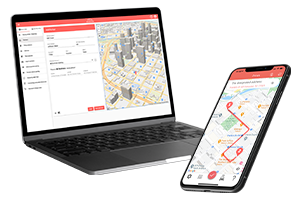March 5, 2021
The single biggest return on your taxes out of all the Business tax deductions out there is on your Business Mileage. You can claim $1,000s of Business Mileage deduction on your taxes, and you can even claim your previous years’ Business Mileage Deductions in case you haven’t done so in any of the previous 3 years.
During this pandemic, losing a deduction opportunity is especially painful

You need to choose a method on which your Business Mileage Deduction will be based. And choose carefully, as you can’t change your mind for at least a year.
If you want to use the Standard Mileage Rate for a car you own, you must choose to use it in the first year the car is available for use in your Business. Then, in later years, you can choose to use either the Standard Mileage Rate or Actual Expenses. You cannot use this method however in the following cases:
- You use five or more cars at the same time (such as in fleet operations);
- Claimed a depreciation deduction for the car using any method other than a straight line;
- Claimed a section 179 deduction on the car;
- Claimed the special depreciation allowance on the car;
- Claimed actual car expenses after 1997 for a car you leased.
Also, there are a few more things you can’t do:
- You cannot deduct any operational expenses (gas, maintenance, etc.). You can still deduct parking and toll expenses.
- You cannot switch methods (Standard Mileage Rate to Actual Expenses Method or vice versa) in the same year.
You can still use the actual expense method, where you can deduct all your actual car expenses, including depreciation, licenses, lease payments, registration fees, gas, insurance, repairs, oil, garage rent, tires, tolls, and parking fees.
There are two ways to track your Business Mileage:
I. Pen and Paper: When reconstructing your log retrospectively and on paper, there are numerous fixed pieces of information and circumstances you have to pay attention to. It will make recovering your logs very difficult. You have to put the data very accurately into your mileage log. The cheaper the solution you use, the harder it will be to resolve these issues.
II. Mileage tracker app and Web Dashboard –Mileage trackers with GPS technology can only track real-time driving. You can’t use them for creating or reconstructing mileage logs retrospectively. Even if your driven mileage is based on reality, you just can’t record them that way. But with MileageWise you can make up for forgotten mileage logs, with the AI Wizard feature, and by checking and correcting 70 logical conflicts your recommended logs will be good to go and IRS-proof, meeting every expectation. After reconstructing your past mileage logs, you can continue tracking your trips with MileageWise. Just as you would do it with a mileage tracker. MileageWise can detect your trips automatically as well, but without using up your data and battery. When you arrive at a destination the app offers you a client and the purpose of the trip from an already existing database. You can always add new clients to your list, which then will be available for you automatically in the future.
Remember these facts about mileage logging:
There are certain items of a Mileage log that are extremely hard to recall from memory. For instance, your Mileage log must include the total Mileage you drove in the Tax Year; The First Odometer or the Last Odometer reading of the year; The Dates of your Business trips; The Address of the Business Client you’ve visited; And the Purpose of your Trips. Think ahead when it comes to your taxes, recalling from memory is not reliable. Don’t wait for an Audit Letter, keep ongoing Mileage logs.
According to Publication 463 of the IRS:
Both Business Mileage tracking methods are helpful but in two different ways. The most significant thing to remember is that you must be able to prove that you recorded the data at the time of the trip such as:
“If you use your car for both Business and Personal purposes, you must divide your expenses between Business and Personal use. You can divide your expense based on the miles driven for each purpose.”
If you do not have proof of your Personal trips you will not be able to prove the Ratio of your Business and Personal trips.
Both Personal and Business Mileage should be recorded but only the Business driving purpose is deductible.



